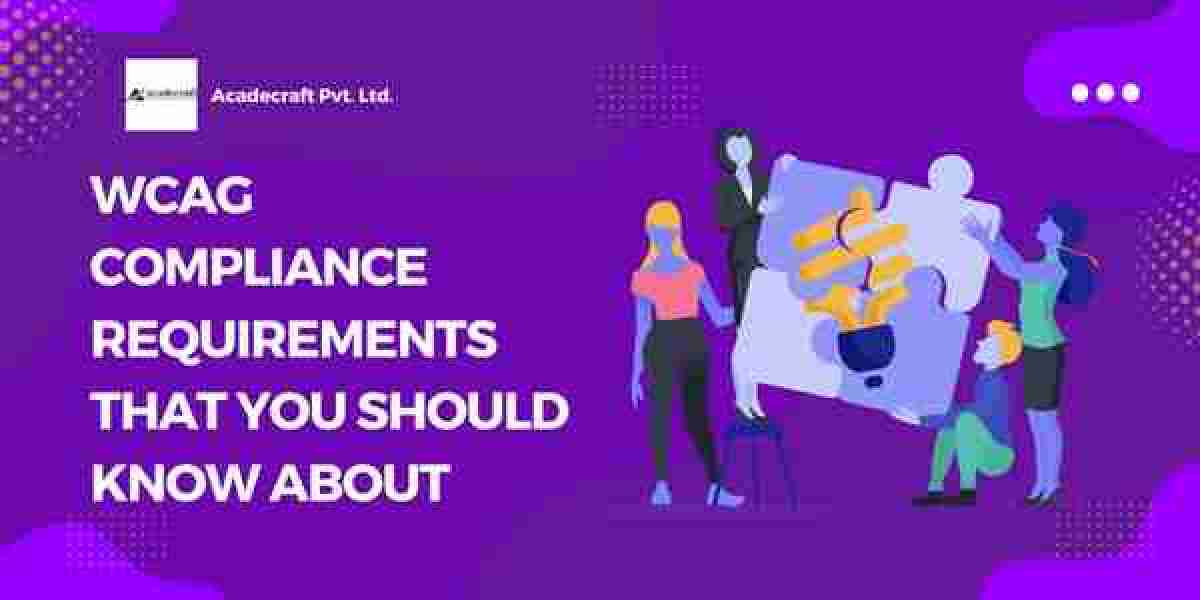Accessibility has become a crucial aspect of website and application development.
Ensuring that your online content is accessible to everyone, including people with disabilities, is not only the right thing to do, but it also opens up your content to a wider audience.
One of the key frameworks for achieving web accessibility is the Web Content Accessibility Guidelines (WCAG).
In this article, we will explore some important WCAG compliance requirements that you should be aware of and the significance of accessibility remediation.
Perceivable Content
WCAG compliance demands that your content is perceivable to all users, regardless of their abilities. This means providing alternatives for non-text content like images, videos, and audio. Descriptive alt text for images and captions or transcripts for multimedia elements are essential. Also, using clear and distinguishable colors and providing resizable text helps users with visual impairments.
Operable Interface
An operable interface ensures that users can interact with your website or application using various input methods. WCAG compliance requires that all functionality is available via keyboard alone, as some individuals cannot use a mouse or touchpad. Providing clear focus indicators and avoiding time limits on user actions are also important considerations.
Understandable Information
WCAG compliance emphasizes the importance of presenting information and user interface elements in a clear and understandable manner. This involves using plain language, avoiding complex concepts, and providing consistent navigation throughout your website or application. Clear instructions and error messages help users complete tasks successfully.
Latest Technology
To achieve WCAG compliance, it is essential to use technologies that are compatible with assistive technologies commonly used by people with disabilities. This includes using standard HTML markup, providing appropriate document structure with headings, and ensuring compatibility with screen readers and other assistive devices.
The Significance of Accessibility Remediation
While understanding WCAG compliance requirements is crucial, it is equally important to address accessibility issues and remediate them effectively.
Accessibility remediation involves identifying and fixing barriers that hinder users with disabilities from accessing and interacting with your digital content.
By investing in accessibility remediation, you can improve user experience, reach a broader audience, and adhere to legal and ethical obligations.
Accessibility remediation often involves performing accessibility audits and utilizing a combination of manual and automated testing techniques.
It may include tasks such as fixing coding errors, implementing proper document structure, and optimizing multimedia for accessibility.
Applications of WCAG Compliance
Let's explore some of the key areas where adhering to WCAG guidelines can make a significant impact:
Websites and Web Applications
Ensuring WCAG compliance is crucial for websites and web applications, as they are the primary channels through which businesses interact with their online audience. By making websites and web applications accessible, companies can provide equal opportunities for people with disabilities to access information, make purchases, and engage with online services.
E-commerce
WCAG compliance plays a vital role in e-commerce platforms, where online transactions and purchases occur. By making online stores accessible, businesses can cater to a larger customer base, including individuals with disabilities who rely on assistive technologies to navigate websites, select products, and complete transactions.
Educational Platforms
Accessibility to educational platforms, such as online learning management systems and digital course materials, is crucial for providing equal educational opportunities to students with disabilities. WCAG compliance ensures that students can access course materials, participate in online discussions, and engage with educational content on an equal footing.
Mobile Applications
As mobile devices have become integral to our daily lives, ensuring WCAG compliance in mobile applications is essential. Accessible mobile apps allow users with disabilities to perform tasks, access information, and utilize services conveniently, irrespective of their abilities or the assistive technologies they rely on.
Healthcare and Telemedicine
WCAG compliance is critical in healthcare and telemedicine applications, where accessibility can have a direct impact on people's health and well-being. Accessible healthcare platforms enable individuals with disabilities to schedule appointments, access medical records, and receive telemedicine services.
Social Media and Communication Platforms
Social media platforms, messaging apps, and other communication tools should prioritize WCAG compliance. By making these platforms accessible, individuals with disabilities can connect with friends and family, participate in social discussions, and access important information in the digital social sphere.
By implementing WCAG compliance requirements and investing in accessibility remediation, businesses and organizations can unlock the potential of a more inclusive digital landscape.
Embracing web accessibility not only benefits individuals with disabilities but also enhances the user experience for all users, expands the reach of digital content, and aligns with legal and ethical obligations to promote equal access for everyone.
Conclusion
Using WCAG compliance requirements in your website or application development process is essential to ensure equal access for all users. By making your content perceivable, operable, and understandable, you enhance the overall user experience.
Also, investing in accessibility remediation allows you to address any existing barriers and make your digital content accessible to people with disabilities. Prioritizing web accessibility not only aligns with legal requirements but also demonstrates a commitment to inclusivity and equal access for everyone.









